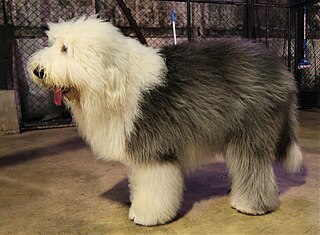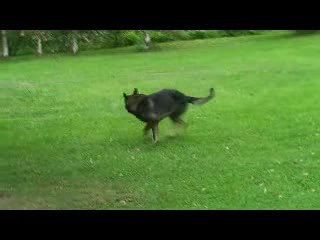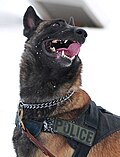
Epilepsy is a group of non-communicable neurological disorders characterized by recurrent epileptic seizures. An epileptic seizure is the clinical manifestation of an abnormal, excessive, and synchronized electrical discharge in the neurons. The occurrence of two or more unprovoked seizures defines epilepsy. The occurrence of just one seizure may warrant the definition in a more clinical usage where recurrence may be able to be prejudged. Epileptic seizures can vary from brief and nearly undetectable periods to long periods of vigorous shaking due to abnormal electrical activity in the brain. These episodes can result in physical injuries, either directly such as broken bones or through causing accidents. In epilepsy, seizures tend to recur and may have no detectable underlying cause. Isolated seizures that are provoked by a specific cause such as poisoning are not deemed to represent epilepsy. People with epilepsy may be treated differently in various areas of the world and experience varying degrees of social stigma due to the alarming nature of their symptoms.

A coonhound, colloquially a coon dog, is a type of scenthound, a member of the hound group. They are an American type of hunting dog developed for the hunting of raccoons and also for feral pigs, bobcats, cougars, and bears. There are six distinct breeds of coonhound.

Gastric dilatation volvulus (GDV), also known as gastric dilation, twisted stomach, or gastric torsion, is a medical condition that affects dogs in which the stomach becomes overstretched and rotated by excessive gas content. The word bloat is often used as a general term to mean gas distension without stomach torsion, or to refer to GDV.
Absence seizures are one of several kinds of generalized seizures. In the past, absence epilepsy was referred to as "pyknolepsy," a term derived from the Greek word "pyknos," signifying "extremely frequent" or "grouped". These seizures are sometimes referred to as petit mal seizures ; however, usage of this terminology is no longer recommended. Absence seizures are characterized by a brief loss and return of consciousness, generally not followed by a period of lethargy. Absence seizures are most common in children. They affect both sides of the brain.
Neutering, from the Latin neuter, is the removal of a non-human animal's reproductive organ, either all of it or a considerably large part. The male-specific term is castration, while spaying is usually reserved for female animals. Colloquially, both terms are often referred to as fixing. In male horses, castrating is referred to as gelding. An animal that has not been neutered is sometimes referred to as entire or intact.

The Belgian Shepherd, also known as the Belgian Sheepdog or the Chien de Berger Belge, is a Belgian breed of herding dog of medium size. It is bred in four distinct varieties based on coat type and colour: the long-haired black Groenendael; the rough-haired fawn Laekenois; the short-haired fawn Malinois, and the long-haired fawn Tervuren. The American Kennel Club considers the four varieties to be separate breeds.

The Brittany Spaniel, French: Épagneul Breton, is a French breed of gun dog of spaniel type, bred primarily for bird hunting.

The Old English Sheepdog is a large breed of dog that emerged in England from early types of herding dog. Obsolete names for the breed include Shepherd's Dog and bob-tailed sheep-dog. The nickname Bob-tail originates from how dogs of the breed traditionally had their tails docked. Old English Sheepdogs can grow very long coats with fur covering the face and eyes and do not shed unless brushed.

Dog aggression expressed by dogs is considered to be normal behaviour and various types of aggression are influenced by a dog's environment and genetic predisposition. Dogs commonly display possessive aggression when defending resources or themselves.

The Dobermann is a German breed of medium-large domestic dog of pinscher type. It was originally bred in Thuringia in about 1890 by Louis Dobermann, a tax collector. It has a long muzzle and – ideally – an even and graceful gait. The ears were traditionally cropped and the tail docked, practices which are now illegal in many countries.

The health of dogs is a well studied area in veterinary medicine.
Epilepsy in animals is a group of neurological disorders characterized by seizures, caused by uncontrolled, abnormal bursts of electrical activity in the brain. They can start and stop very abruptly and last any amount of time from a few seconds to a few minutes. Canine epilepsy is often genetic but epilepsy in cats and other pets is rarer, likely because there is no hereditary component to epilepsy in these animals.

Dog behavior is the internally coordinated responses of individuals or groups of domestic dogs to internal and external stimuli. It has been shaped by millennia of contact with humans and their lifestyles. As a result of this physical and social evolution, dogs have acquired the ability to understand and communicate with humans. Behavioral scientists have uncovered a wide range of social-cognitive abilities in domestic dogs.
Episodic dyscontrol syndrome (EDS), otherwise known as intermittent explosive disorder (IED) or sometimes just dyscontrol, is a pattern of abnormal, episodic, and frequently violent and uncontrollable social behavior in the absence of significant provocation; it can result from limbic system diseases, disorders of the temporal lobe, or abuse of alcohol or other psychoactive substances.

Separation anxiety in dogs describes a condition in which a dog exhibits distress and behavior problems when separated from its handler. Separation anxiety typically manifests within minutes of departure of the handler. It is not fully understood why some dogs suffer from separation anxiety and others do not. The diagnosis process often leads to a misdiagnosis as it is difficult to differentiate from other medical and behavioral problems. The behavior may be secondary to an underlying medical condition. With chronic stress, impairments to physiological health can manifest. Increased stress in the dog alters hormone levels, thus decreasing natural immunity to various health problems.

Tail chasing is a behaviour exhibited in dogs that is characterized by spinning in tight circles in either direction, and can be slow and focused on the tail or fast and unfocused. It is a compulsion similar to those seen in humans suffering from OCD and it can be quite disruptive to the lives of the dogs themselves, as well as their owners. Some causes have been suggested, including genetic factors, and environmental factors that vary depending on the individual dog. Furthermore, treatment options include drugs that decrease the frequency of tail chasing by targeting the underlying mechanisms, and behavioural changes regulated by the dog's owners.
Congenital portosystemic shunts (PSS) is a hereditary condition in dogs and cats, its frequency varying depending on the breed. The shunts found mainly in small dog breeds such as Shih Tzus, Tibetan Spaniels, Miniature Schnauzers and Yorkshire Terriers, and in cats such as Persians, British Shorthairs, Himalayans, and mixed breeds are usually extrahepatic, while the shunts found in large dog breeds such as Irish Wolfhounds and Labrador Retrievers tend to be intrahepatic.

Fly biting refers to a type of dog behavior: episodes of intentional focused biting at the air, as if the dog is biting at imaginary flies. Cavalier King Charles Spaniels appear to be predisposed to fly catching syndrome, though it has been documented in many different breeds and mixes. Age of onset is varied.
Immune-mediated thrombocytopaenia (IMT) is a disease common in dogs and rare in cats. The disease is characterised by a low platelet count caused by destruction of the platelets from the immune system. IMT is the most common cause of thrombocytopaenia in dogs.
















